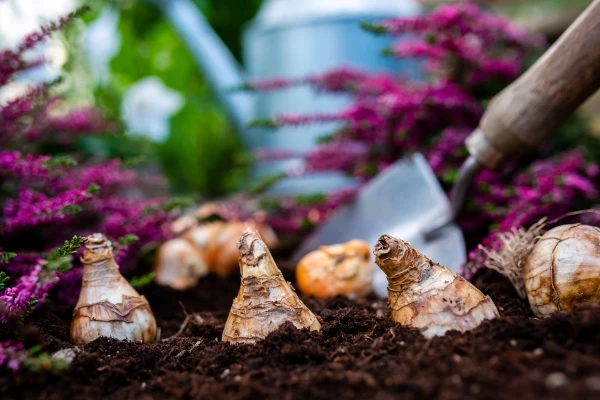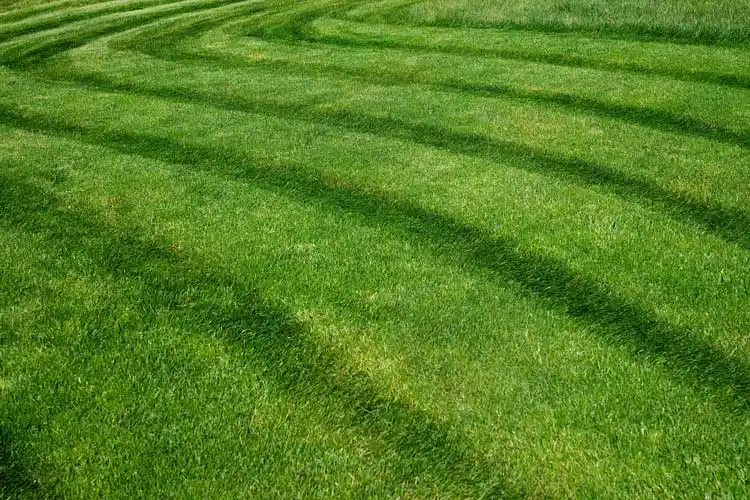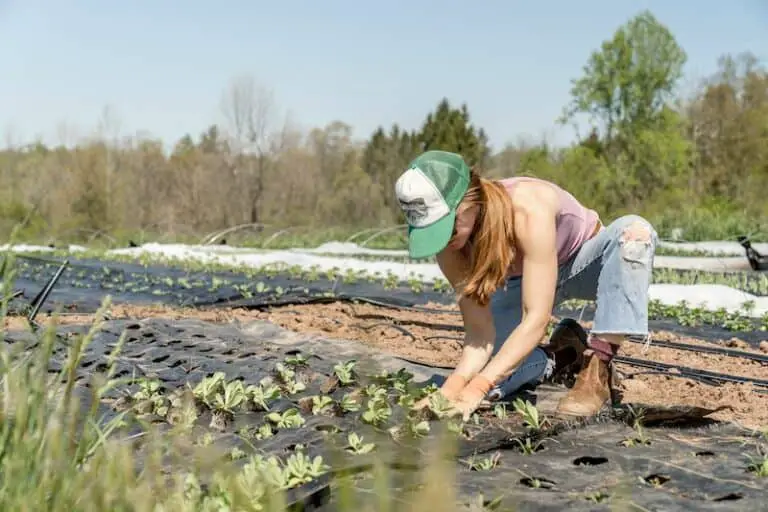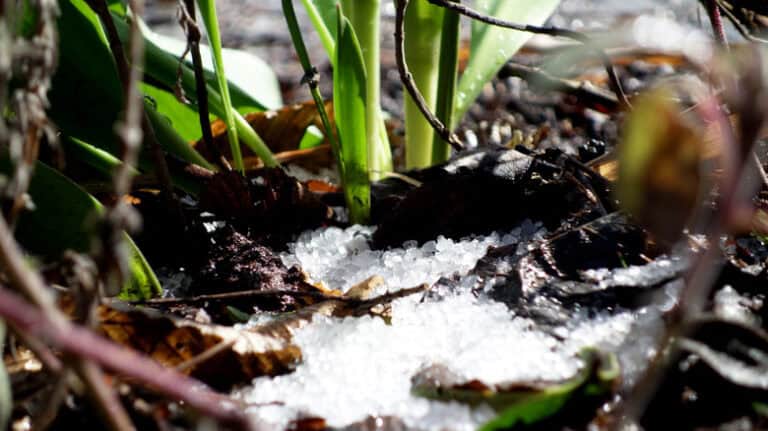Plant These Vegetables This Fall To Harvest Next Spring: Top Picks
Plant these vegetables this fall for a bountiful spring harvest. Enjoy fresh produce by starting your garden now.
Fall gardening offers a unique opportunity to cultivate vegetables that thrive in cooler temperatures. Planting in the fall allows crops to establish strong roots, ensuring a robust spring harvest. Vegetables like garlic, spinach, and carrots are ideal choices. They can withstand frost and grow well over the winter months.
Fall planting also helps manage garden space efficiently, giving you a head start on the growing season. This approach not only extends your harvest period but also reduces springtime workload. Embrace fall gardening to enjoy fresh, homegrown vegetables early next year. Start planning your fall garden today for a fruitful spring.
Benefits Of Fall Planting
Planting vegetables in the fall has many benefits. It helps you enjoy fresh produce in the spring. Let’s explore the key advantages of fall planting.
Extended Growing Season
Planting in the fall extends your growing season. You get a head start on spring. Many vegetables thrive in cooler temperatures. These include carrots, spinach, and kale. By planting in fall, you can harvest them early in spring.
Fall planting helps you make the most of your garden. You use the space more efficiently. This means more veggies for your table.
Improved Soil Conditions
Soil conditions are better in the fall. The ground is still warm from summer. This helps seeds to germinate quickly. Rainfall is usually more frequent in the fall. This provides consistent moisture for your plants.
Planting in the fall also helps improve soil health. Decomposing plant matter enriches the soil with nutrients. This leads to healthier, stronger plants in the spring.
Table Of Fall Vegetables
| Vegetable | Planting Time | Harvest Time |
|---|---|---|
| Carrots | Late Summer | Early Spring |
| Spinach | Early Fall | Late Winter |
| Kale | Mid Fall | Early Spring |
Planting in the fall is beneficial for your garden. It extends the growing season and improves soil conditions. Try planting these vegetables this fall for a bountiful spring harvest.

Credit: www.groundsguys.com
Choosing The Right Vegetables
Planting vegetables in the fall ensures a bountiful harvest next spring. The key is selecting the right vegetables. Some thrive in cold weather, while others mature quickly. This guide helps you choose the best options.
Cold-hardy Varieties
Cold-hardy vegetables withstand frost and cold temperatures. These plants are ideal for fall planting. Here are some top choices:
- Kale: Grows well in cold weather, offering nutritious leaves.
- Spinach: Tolerates frost, providing fresh greens in spring.
- Carrots: Roots grow sweeter after exposure to cold.
- Brussels Sprouts: Develop a better flavor in cooler temps.
Quick-maturing Options
Quick-maturing vegetables are perfect for fall planting. They grow fast and can be harvested in a short time. Consider these options:
- Radishes: Ready to harvest in just 4 weeks.
- Lettuce: Grows quickly, providing fresh leaves in a few weeks.
- Arugula: Fast-growing and adds a peppery flavor to salads.
- Turnips: Both roots and greens can be harvested in 2 months.
For a successful fall garden, choose cold-hardy and quick-maturing vegetables. This ensures a rich harvest next spring.
Carrots
Carrots are a hardy root vegetable that thrive in cooler weather. Planting them in the fall ensures a sweet and bountiful harvest by next spring. Follow these tips to grow the best carrots.
Optimal Planting Time
Carrots should be planted in the fall, about 10 weeks before the first frost. This allows the seeds to establish before winter. The best time to plant is from late summer to early fall.
Soil Preparation
Carrots need loose, well-draining soil to grow straight and long. Before planting, remove rocks and debris from the soil. Make sure the soil is rich in organic matter.
Use a garden fork to loosen the soil up to 12 inches deep. Mix in compost or aged manure to improve soil fertility. Ensure the soil pH is between 6.0 and 6.8 for optimal growth.
| Soil Requirement | Details |
|---|---|
| Soil Type | Loose, well-draining |
| Soil pH | 6.0 to 6.8 |
| Organic Matter | High |
After preparing the soil, create shallow furrows about 1/4 inch deep. Space the rows 12 inches apart to allow room for growth.
- Remove rocks and debris from the soil.
- Loosen the soil up to 12 inches deep.
- Mix in compost or aged manure.
- Ensure soil pH is between 6.0 and 6.8.
- Create shallow furrows for planting.
Carrots planted in well-prepared soil will grow strong and healthy. This ensures a sweet and abundant harvest in spring.
Garlic
Garlic is a versatile and flavorful addition to any garden. Planting garlic in the fall allows it to establish roots before winter. This results in a bountiful harvest in spring. Here’s how to grow garlic successfully.
Planting Techniques
Proper planting techniques are crucial for a healthy garlic crop. Follow these steps:
- Choose a sunny spot with well-drained soil.
- Break the garlic bulb into individual cloves.
- Plant each clove pointy end up, 2 inches deep.
- Space cloves 4-6 inches apart in rows 12 inches apart.
- Cover with soil and a layer of mulch for insulation.
Companion Plants
Garlic grows well with certain plants. These plants help garlic thrive:
- Tomatoes: Repels pests like spider mites.
- Roses: Protects from aphids.
- Carrots: Improves flavor and growth.
- Spinach: Enhances growth by deterring pests.
Avoid planting garlic near peas and beans. They can hinder garlic growth.
Spinach
Spinach is a fantastic vegetable to plant in the fall. This leafy green loves cool weather and can withstand frost. You will enjoy its fresh leaves by next spring. Spinach is rich in vitamins and minerals. It is easy to grow and adds a nutritious boost to your meals.
Seed Selection
Selecting the right seeds is crucial for a successful spinach harvest. Choose varieties that are known for their cold tolerance. Some popular choices include:
- Bloomsdale: Known for its crinkly leaves and sweet taste.
- Giant Winter: Ideal for fall planting due to its hardiness.
- Tyee: Resistant to diseases and grows well in cold weather.
Make sure your seeds are fresh and from a reputable source. Fresh seeds ensure better germination rates. Always check the expiration date on the seed packet.
Frost Protection
Spinach can survive frost, but additional protection helps. Use row covers to shield young plants from extreme cold. Row covers are easy to install and remove. They keep the frost off the leaves and retain soil warmth.
Another option is to use mulch around the plants. Mulch helps insulate the roots and keeps the soil temperature stable. Straw or shredded leaves work well as mulch. Spread a 2-3 inch layer around the base of your spinach plants.
Water your spinach regularly, especially during dry spells. Well-watered plants are more resilient to cold weather. Avoid watering late in the day to reduce the risk of frost damage.
Kale
Kale is a hardy vegetable perfect for fall planting and spring harvesting. This leafy green is packed with nutrients and thrives in cooler temperatures.
Variety Selection
Choosing the right kale variety ensures a bountiful harvest. Here are some popular choices:
- Cavolo Nero (Tuscan Kale) – Known for its dark, wrinkled leaves.
- Red Russian – Features tender, red-tinged leaves.
- Winterbor – Ideal for cold climates, with curly leaves.
- Premier – Fast-growing and excellent for early harvests.
Pest Management
Protecting your kale from pests is crucial. Here are some tips:
- Use row covers to shield young plants from insects.
- Inspect leaves for caterpillars and remove them manually.
- Introduce beneficial insects like ladybugs to eat pests.
- Practice crop rotation to prevent soil-borne diseases.
- Apply organic insecticides if infestations occur.
For more effective pest control, plant companion plants such as garlic and onions. These plants repel many common kale pests.
| Pest | Control Method |
|---|---|
| Aphids | Spray with soapy water |
| Cabbage Worms | Handpick and use row covers |
| Flea Beetles | Apply neem oil |
By following these steps, you can enjoy a healthy kale harvest next spring.
Onions
Onions are a versatile and essential vegetable for any garden. They add flavor to countless dishes and are easy to grow. Planting onions in the fall allows you to harvest them in the spring. This ensures a supply of fresh onions for your kitchen.
Planting Sets Vs. Seeds
Choosing between onion sets and seeds depends on your preference and garden conditions. Onion sets are small, immature bulbs. They are easy to plant and grow quickly. Seeds, on the other hand, take longer to mature but offer more variety.
| Onion Sets | Onion Seeds |
|---|---|
| Quicker to harvest | More variety |
| Easy to plant | Longer growth period |
| Less prone to disease | Cheaper than sets |
Overwintering Tips
Overwintering onions ensures they survive the cold months. Follow these tips for success:
- Choose a sunny location for planting.
- Ensure the soil is well-drained and fertile.
- Plant sets or seeds in early fall.
- Mulch the soil with straw to protect from frost.
- Water the onions regularly until the ground freezes.
By following these tips, you’ll enjoy a healthy onion harvest in the spring. Happy gardening!

Credit: mx.pinterest.com
Peas
Peas are a fantastic choice for fall planting. They thrive in cooler temperatures and are relatively easy to grow. By planting peas in the fall, you can enjoy a delightful harvest in the spring. Let’s explore how to set up support structures and harvesting tips for a bountiful pea crop.
Support Structures
Peas need support to grow tall and healthy. Without support, they may fall over and rot. Here are some simple support ideas:
- Stakes: Place wooden stakes in the ground. Tie the pea vines to the stakes as they grow.
- Treillis: Install a trellis for the peas to climb. This keeps them off the ground.
- Netting: Use garden netting stretched between posts. This offers strong support.
Ensure the support structures are sturdy. They should withstand wind and rain.
Harvesting Tips
Harvesting peas at the right time ensures the best taste. Follow these tips for a perfect harvest:
- Check Pods: Look for plump, green pods. They should be full and firm.
- Pinch Test: Gently squeeze the pods. They should feel firm but not hard.
- Pick Regularly: Harvest peas every two days. This encourages more pods to grow.
- Use Scissors: Cut the pods with scissors. This avoids damaging the plant.
Freshly harvested peas taste sweet and delicious. Enjoy them right away or store them for later use.
Preparing Your Garden
Getting your garden ready for fall planting ensures a bountiful harvest in spring. Proper preparation now leads to healthy, productive plants later. This section will guide you through essential steps for soil amendments and mulching techniques.
Soil Amendments
Healthy soil is the foundation of a thriving garden. Start by testing your soil. A soil test reveals nutrient levels and pH balance. Based on the results, you can add necessary amendments:
- Compost: Adds organic matter and improves soil structure.
- Manure: Provides essential nutrients like nitrogen and potassium.
- Lime: Adjusts soil pH to optimal levels for vegetable growth.
Mix these amendments into the soil. Use a garden fork or tiller for even distribution. Aim for a depth of 6-8 inches to ensure roots access the nutrients.
Mulching Techniques
Mulching protects your garden and boosts plant health. It retains soil moisture, suppresses weeds, and regulates soil temperature. Here are effective mulching techniques:
- Organic Mulch: Use materials like straw, leaves, or grass clippings.
- Inorganic Mulch: Use materials like black plastic or landscape fabric.
Spread mulch evenly around plants, keeping it 2-3 inches thick. Avoid piling mulch against plant stems to prevent rot.
| Mulch Type | Benefits |
|---|---|
| Straw | Retains moisture, decomposes quickly, adds organic matter |
| Leaves | Free, abundant, decomposes quickly |
| Black Plastic | Retains heat, suppresses weeds |
By following these soil and mulching tips, you’ll set your garden up for success. Happy planting!

Credit: www.youtube.com
Frequently Asked Questions
What Vegetables Can I Plant In Fall?
Carrots, garlic, and spinach are excellent choices. They thrive in cooler temperatures and can be harvested in spring.
How Do I Prepare Soil For Fall Planting?
Clear debris, add compost, and till the soil. Ensure good drainage and nutrient-rich conditions for optimal growth.
When Should I Start Planting Fall Vegetables?
Plant fall vegetables in late summer to early fall. This timing ensures they establish before winter and are ready by spring.
Conclusion
Planting fall vegetables ensures a fresh harvest in spring. Choose crops like carrots, garlic, and spinach for best results. These vegetables thrive in cooler temperatures and are easy to grow. Enjoy homegrown produce as the weather warms. Start your fall garden today for a rewarding spring harvest.
Happy gardening!







